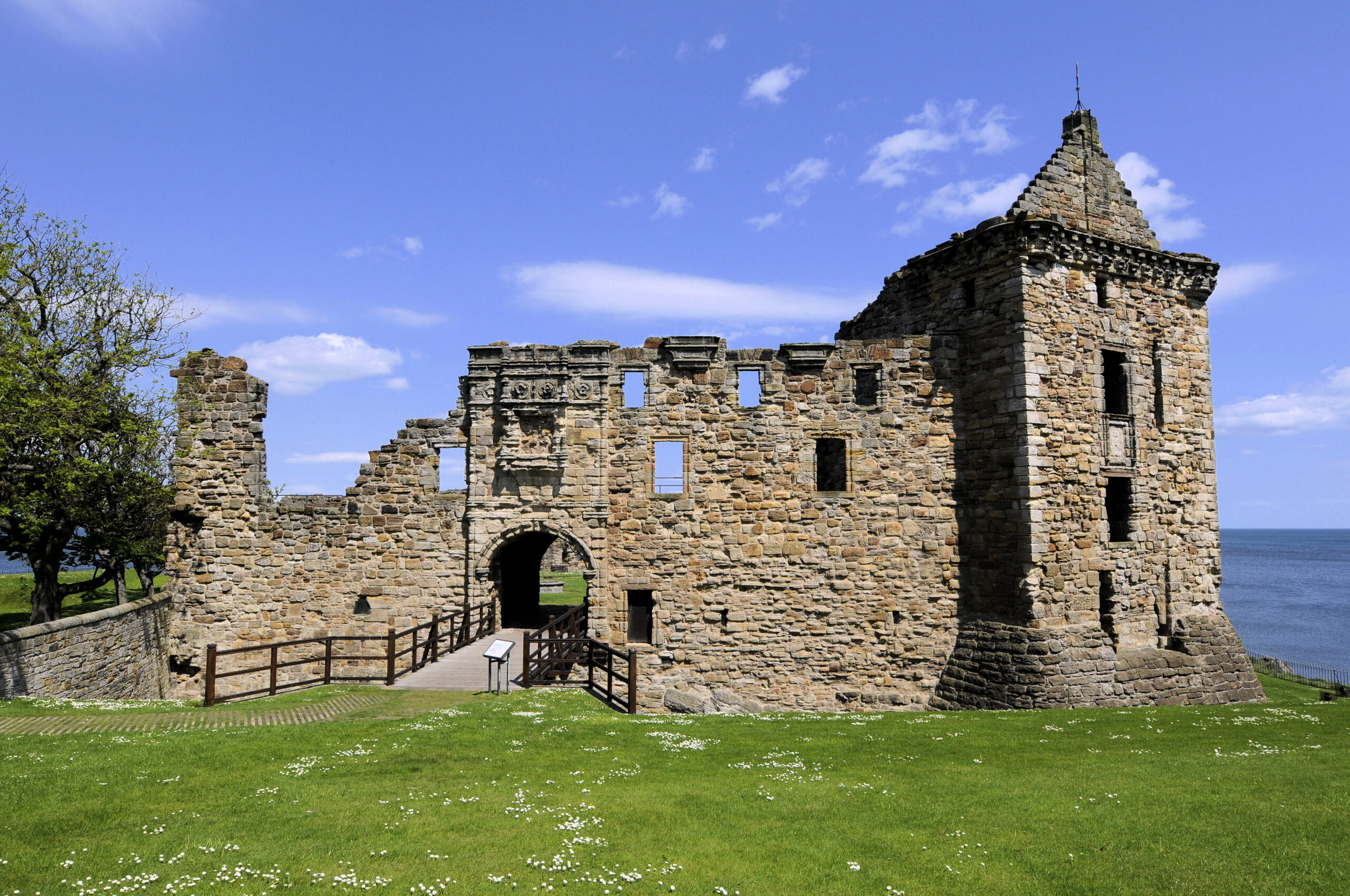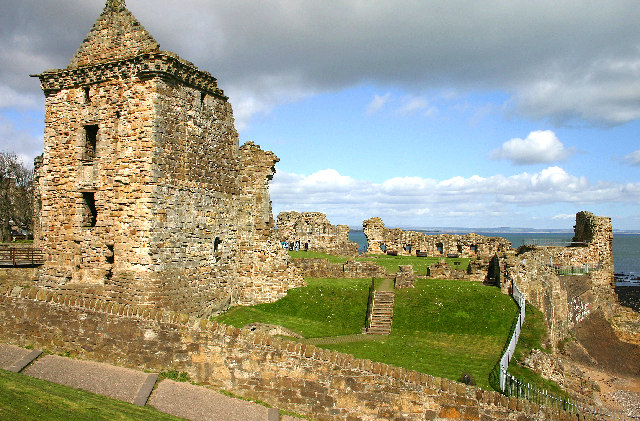St Andrews Castle
Our beautiful ruins were once a fully functioning castle and are home to countless pivotal stories. Here we offer an insight into the ghosts that once lived inside the castle walls and their impact on the town and the world.
After reading the information below, use our St Andrews Castle quiz to see what you can remember.

Fourteenth Century and Before – Wars of Independence
A beautiful stone castle was built overlooking the North Sea under the tenure of Bishop of St Andrews, Roger de Beaumont, 1189-1202. Sources of the castle’s life and life within it up until the fifteenth century are patchy and isolated, therefore a history of the castle at this time is incredibly difficult. What we do know is the extent of its strategic importance because of how many times it changed hands during the Scottish wars of independence. Taken by the English following the sack of Berwick in 1301, it was retaken in 1314 after Scottish victory at Bannockburn. Fifteen years later it was back in English hands and defences were reinforced, 1336. However, in the same year, Sir Andrew Moray as Regent of Scotland recaptured it and it was destroyed by the Scots to keep it out of English hands for good. It would be another forty years before Bishop Water Trail restored it to function, 1385-1401. Dedication to holding castles alludes to the vast influence it had on power and control. Many historians argue that the Scots’ military strategy, led by Robert I, off of the battlefield was the most important reason they were able to resist conquest, overlordship and an English dynasty, exemplified by the shadows of sieges of St Andrews castle.
Fifteenth Century – Bishop’s Residence and Prison
Fifteenth-century St Andrews saw many intellectual developments, a large number within the College Hospital, now College of St Leonards. However, the most consequential was the founding of the University in 1413. As a new centre for intellectuals, St Andrews saw many debates and legal trials as the power of the Catholic Church began to dwindle. The castle, as home to the Bishop, was a target for debate and became a prison for those convicted of heresy. The Bottle Dungeon, in the north-west corner of the courtyard, was one of the two ground floor chambers. The infamous dungeon is a 7.3 metre deep chamber that imprisoned common criminals with a diameter of only around 4.6 metres. It is arguably one of the most horrible dungeons of any Scottish castle.

Sixteenth Century – Remodels, Sieges, Murder, and Debates
The majority of our surviving sources on the Castle come from the sixteenth century. Despite St Andrews being one of the smaller Scottish cities at this time it had an importance disproportionate to its size. For example, it was referred to as “chief and mother of the realme” by the Bishop of Ross. This is reflected in its royal relationship as in 1538 James V chose St Andrews as the place to welcome his new bride, Mary of Guise, to Scotland, two years later their son was born and christened here. It also enjoyed free trade across Scotland and was substantially wealthy, owing to their overseas trade and sizable guilds. These guilds were able to look after their poorer members and provide jobs for most townspeople. For example, in 1556 the baxters’ guild had at least 41 master craftsmen and could afford to maintain its own chaplain who served the altar of St Tobert in Holy Trinity Church.
As a result of the significance of the town, the castle was the location for many key events during this momentous century, the Scottish Reformation, in particular. Military strategies were developed in the form of Archbishop James Beaton’s gun towers (1521-1539) to strengthen defences as tensions heightened. These were put to use by his nephew Cardinal David Beaton (1539-1546) as he argued against relations with Protestant England. Consequently, many intellectual, Protestant preachers were unhappy and spoke out against him, like George Wishart who was burned at the stake outside of the castle for preaching. This led to a group of Protestant nobles occupying the castle and murdering Cardinal Beaton. Regent Arran led a siege in response which caused extensive damage. However, it also resulted in the construction of the castle’s most remarkable features – the mine (dug by Regent Arran’s troops) and countermine (dug by the Protestant rebels). These underground passages of mediaeval siege warfare were unique and the military advancements, alongside the religious and legal ramifications, were groundbreaking.
Years later, the castle was in near ruin after decades of conflict and so reconstructed by Archbishop John Hamilton (1546-1571). The new entrance front and style illuminates the changes and developments in the field of architecture in just a few years. Unfortunately he did not have long to add more repairs before he was hanged for opposing the reformation.
Seventeenth Century – Sacrifice for the Pier
The success of the Reformation movement in Scotland left the Castle without a resident or purpose from 1592 so the damage got worse and the repair bill grew. As a result, the town council decided it would be a better use of resources to use the castle stones to repair the pier as that still benefited the town economy. So much like some stones of the Cathedral were taken by ordinary people to repair their houses after the fire, St Andrews pier, as it stands today, includes some stones that hold shadows of the Castle’s sometimes glorious and sometimes grim past.
